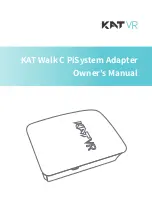
Fabric OS 6.2 administrator guide 387
To enable device sharing across multiple fabrics, you must create LSAN zones on the edge fabrics (and, as
an option on the backbone fabric as well), using normal zoning operations to create zones with names
that begin with the prefix LSAN_, and adding host and target port WWNs from both local and remote
fabrics to each local zone as desired. Zones on the backbone and on multiple edge fabrics that share a
common set of devices will be recognized as constituting a single multi-fabric LSAN zone, and the devices
that they have in common will be able to communicate with each other across fabric boundaries.
LSAN zones and fabric-to-fabric communications
Zoning is enforced by all involved fabrics, any communication from one fabric to another must be allowed
by the zoning setup on both fabrics. If the SANs are under separate administrative control, separate
administrators maintain access control.
If you are managing other switches in a fabric, HP recommends that you run the
defZone
--
show
command on your Fabric OS 5.1.0 and later switches as a precaution. Default zoning behavior in
Fabric OS 5.1.0 and later operates differently than earlier versions of Fabric OS (2.x, 3.x 4.x and 5.0.1).
For example, if you enter the
defZone
--
noaccess
command on a Fabric OS 5.1.0 or later switch,
default zoning configurations will be created on each switch in the fabric (2.x, 3.x, 4.x or 5.0.1
switches). Fabric OS 5.1.0 and later switches do not indicate that a default configuration is enabled
when you use the
cfgShow
or
cfgActvShow
commands. For more information about default zoning,
see Chapter 9, ”
Administering advanced zoning
” on page 233.
Controlling device communication with the LSAN (sample procedure)
The following example procedure illustrates how LSANs control which devices can communicate with each
other. The example procedure shows the creation of two LSANs (called
lsan_zone_fabric75
and
lsan_zone_fabric2
), which involve the following devices and connections:
•
Switch1 and the host in fabric75.
•
Switch2, Target A, and Target B in fabric2.
•
Switch1 is connected to the FC router using an EX_Port or VEX_Port.
•
Switch2 is connected to the FC router using another EX_Port or VEX_Port.
•
Host has WWN 10:00:00:00:c9:2b:c9:0c (connected to switch1).
•
Target A has WWN 50:05:07:61:00:5b:62:ed (connected to switch2).
•
Target B has WWN 50:05:07:61:00:49:20:b4 (connected to switch2).
The following procedure shows how to control device communication with the LSAN:
1.
Log in as admin and connect to switch1.
2.
Enter the
nsShow
command to list the WWN of the host (10:00:00:00:c9:2b:c9:0c).
NOTE:
The
nsShow
output displays both the port WWN and node WWN; the port WWN must be used
for LSANs.
switch:admin>
nsshow
{
Type Pid
COS PortName
NodeName
TTL(sec)
N 060f00;
2,3;
10:00:00:00:c9:2b:c9:0c;
20:00:00:00:c9:2b:c9:0c; na
FC4s: FCP
NodeSymb: [35] "Emulex LP9002 FV3.91A3 DV5-5.20A6 "
Fabric Port Name: 20:0f:00:05:1e:37:00:44
Permanent Port Name: 10:00:00:00:c9:2b:c9:0c
The Local Name Server has 1 entry }
3.
Enter the
zoneCreate
command to create the LSAN lsan_zone_fabric75, which includes the host.
switch:admin>
zonecreate "lsan_zone_fabric75", "10:00:00:00:c9:2b:c9:0c"
Summary of Contents for A7533A - Brocade 4Gb SAN Switch Base
Page 1: ...HP StorageWorks Fabric OS 6 2 administrator guide Part number 5697 0016 Edition May 2009 ...
Page 24: ...24 ...
Page 99: ...Fabric OS 6 2 administrator guide 99 ...
Page 100: ...100 Managing user accounts ...
Page 118: ...116 Configuring standard security features ...
Page 164: ...162 Configuring advanced security features ...
Page 234: ...232 Installing and maintaining firmware ...
Page 268: ...266 Administering advanced zoning ...
Page 284: ...282 Configuring Enterprise class platforms ...
Page 292: ...290 Routing traffic ...
Page 294: ...292 Interoperability for merged SANs ...
Page 302: ...300 Configuring the Distributed Management Server ...
Page 334: ...332 iSCSI gateway service ...
Page 340: ...338 Administering NPIV ...
Page 407: ...Fabric OS 6 2 administrator guide 405 ...
Page 408: ...406 Using the FC FC routing service ...
Page 438: ...434 Administering extended fabrics ...
Page 460: ...456 Administering ISL trunking ...
Page 516: ...512 FICON fabrics ...
Page 526: ...522 Configuring and monitoring FICON Extension Services ...
Page 540: ...536 Configuring the PID format ...
Page 544: ...540 Understanding legacy password behavior ...
Page 546: ...542 Mixed fabric configurations for non merge SANs ...
Page 550: ...546 Migrating from an MP Router to a 400 MP Router ...
Page 558: ...554 Inband Management ...
Page 572: ...568 ...
















































